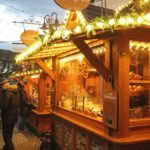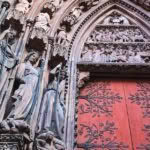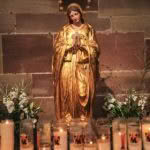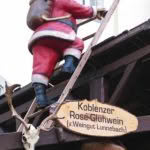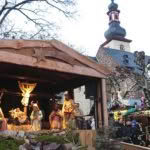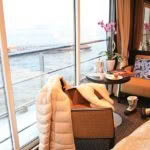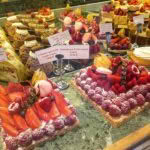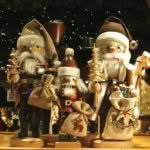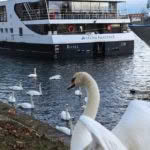Sally Tagg finds her Christmas spirit aboard a European winter cruise
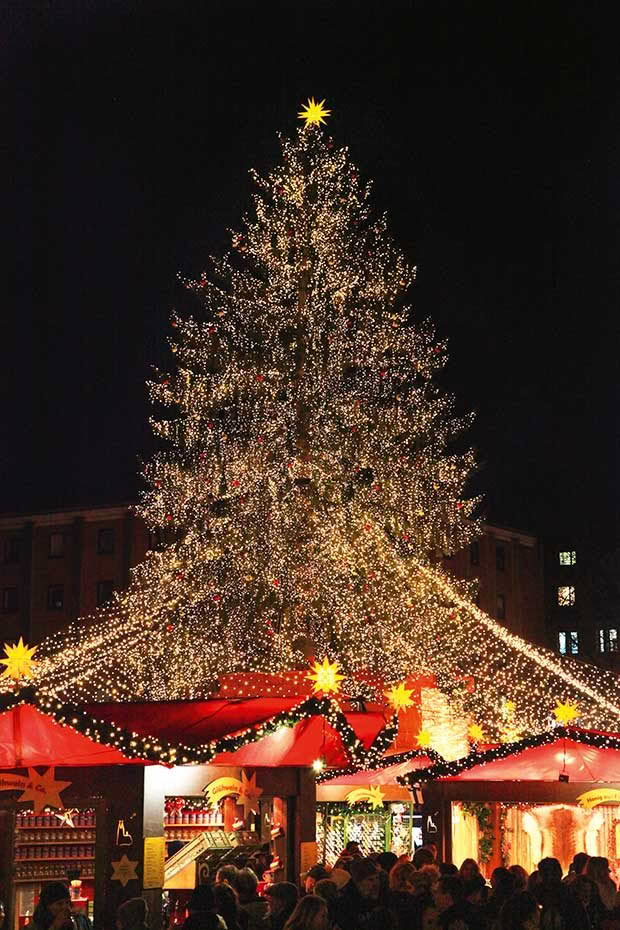
Dripping with frosted lights, this giant living Xmas tree enthrals visitors at the Strasbourg Cathedral market.
Swapping pavlova and sunshine for European waterways and cuckoo clocks helps one voyager realize the festive spirit she never knew she had.
Words & Photos: Sally Tagg
Wandering the cobbled streets of the winemaking town of Rüdesheim in December is like stepping into the pages of a Grimm’s fairy tale. Medieval, half-timbered houses with pretty, shuttered windows overlook the lazy river, the spires of Gothic churches pierce the sky, and the stalls that squeeze into the market square are all a-glitter with festoon lights as the cinnamon-sugar aroma of glűhwein fills the air. It’s romance in full, festive colour and even though I’m flying solo, I can’t help but be seduced.
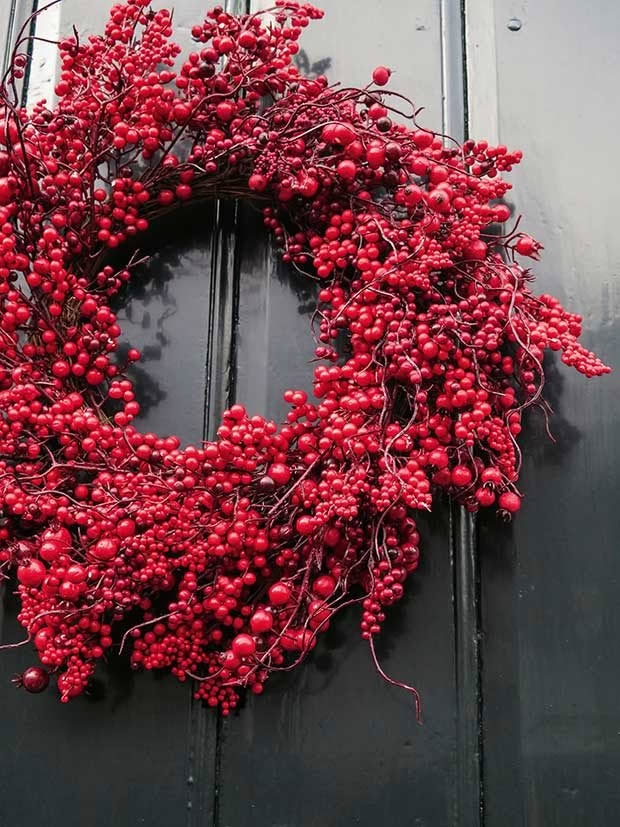
Festive berry wreaths welcome Xmas travelers in Cologne.
I’m on a seven-night winter wonderland cruise which travels south along the Rhine from Amsterdam to Basel. The scenery drifts by like a Brueghel painting, sometimes in spectacular snow-decked silence, and the guest of honour on board is most definitely the bloke in the big red suit.
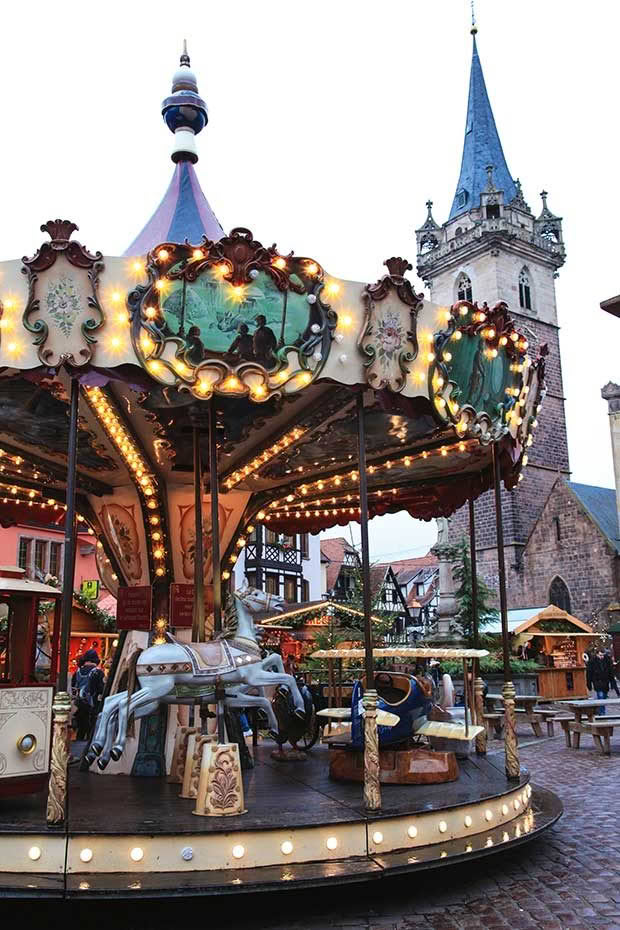
Strolling through Mainz, the enchanting merry-go-round and its faded fairy-tale figures transports visitors back in time.
The passengers, a mix of American, European and a few Aussies, are mainly couples and they are here for one reason: the Christmas markets. It seems that everyone is after a yuletide souvenir of the journey, and with daily tours to markets en route, there are plenty of opportunities to find them. I decided to name this obsessive mission to unearth the perfect gewgaw “Christmas syndrome”. Having swapped my jandals for fur-lined snow boots, I was determined to make the most of it. Although baubles and tinsel trinkets are not my bag, I was happy to make a beeline for the apple crêpes with caramel sauce.
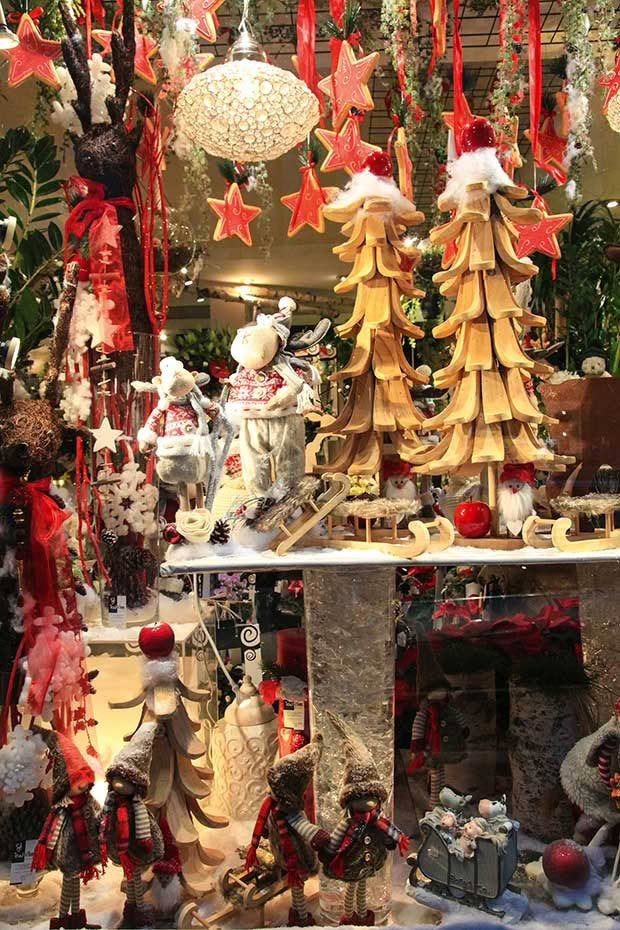
Market stalls in Rūdesheim’s main square bulge with Xmas crafts.
The markets, usually situated in the historic areas of the town, generally comprise wooden stalls displaying artisan crafts. There are entertainment areas, (with choirs singing carols), ice rinks where skaters in bobble hats circle hand in hand and merry-go-rounds with faded fairy-tale figures to ride. Most of the markets open at about 11am, but the real magic begins after dark. With so much regional food on offer, travelers mingle with locals who meet here for an after-work beer and bratwurst. It may have been the happy atmosphere, or it may have been the beer, but before too long I found myself enraptured by snow globes and looking seriously at kitsch Santa knitwear. I was bitten.
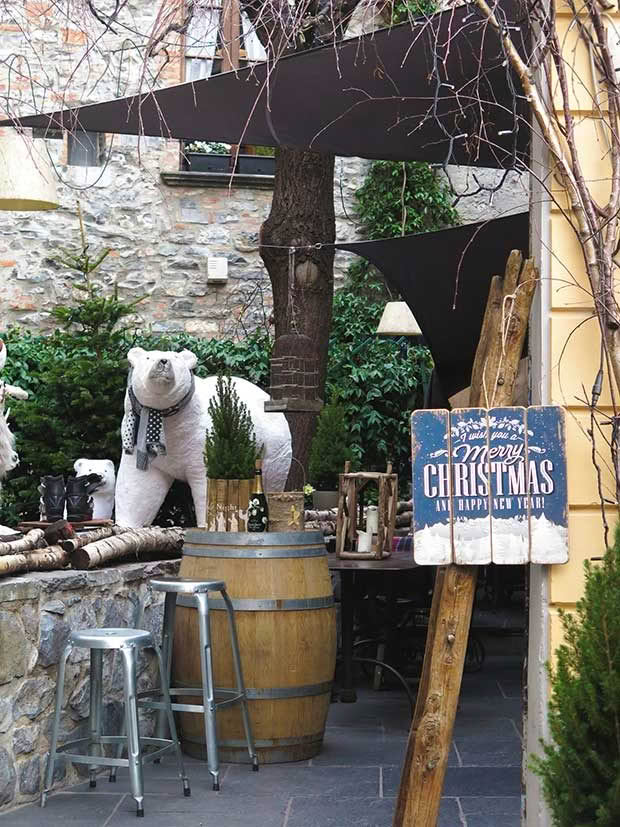
Lake Como street markets offer some of the coolest bars in town. Who can resist a cocktail with a polar bear?
In Rüdesheim, some fellow cruisers dashed off to see Siegfried’s Mechanical Musical Instruments Museum – an offbeat collection of jukeboxes, carnival machines and pianolas – but as the light faded, I headed straight to the heart of the market in Drosselgasse Lane. It’s here, at the famous Erzgebirge Palace shop, that you can buy a nutcracker doll. These wooden soldiers, made of dried fir tree, originated in the 17th century and are said to bring good luck. With 60 moving parts, the handmade dolls are eye-wateringly expensive, so I invested in a fluffy hat instead and rewarded my parsimony with a local delicacy – or two: deep-fried potato cake (a kartoffelpuffer) smothered in apple sauce, vanilla-roasted almonds and chocolate-coated fruit kebabs all washed down with a Rüdesheimer coffee made with the famous Asbach Uralt brandy.
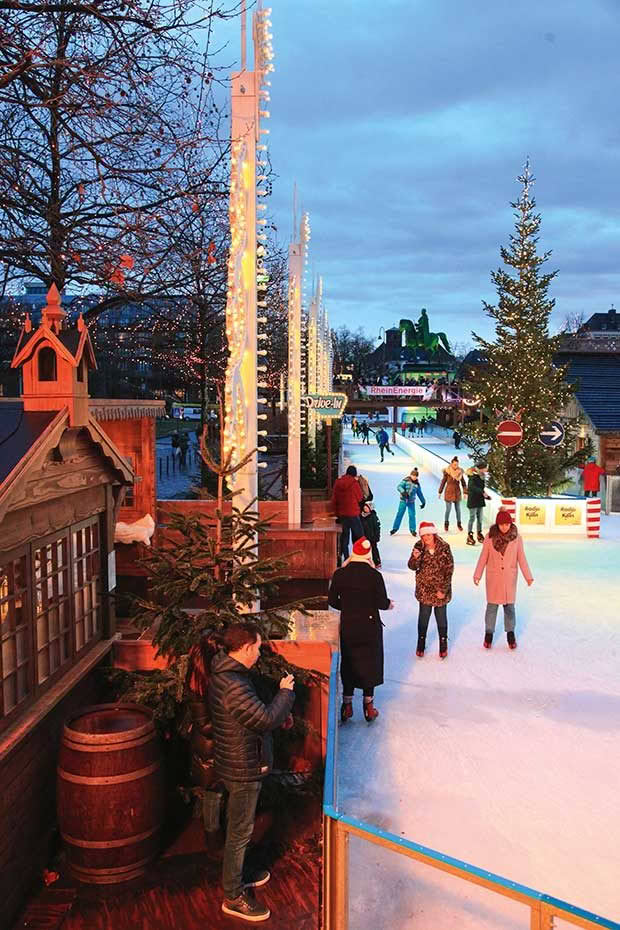
At 4pm, day turns to night, the ice skating at the Cologne market is picturesque, with music and festive aromas filling the air.
Two days down the river we reached what must be utopia for the Christmas cruiser when we arrived in the city of Strasbourg on the French border. This “capitale de Noel” has one of the earliest recorded Christmas markets, held here in 1570.
- The Frische Champignons (fresh mushrooms with onions smothered in cheese sauce) was a welcome treat at the Rūdesheim market.
- The impressive Gothic northern door on the western façade of Strasbourg Cathedral.
- The statue of Mary in golden splendour inside Strasbourg Cathedral is a pilgrimage site.
- Even the rooftop Santa in Koblenz needs a dash of glühwein to help him complete his duties.
- A Colmar town square nativity scene glows in the grey morning light.
Today these markets are spread over 11 different locations with more than 300 stalls. The main one surrounds the impressive red sandstone Gothic cathedral where the largest fir tree in Europe is a focal point. When I arrived, it dripped with frosted lights against an inky black sky, spectacular in its pagan glory. Not to be outdone, the cathedral houses an 18-metre-high astronomical clock – all golden and opulent – where each day at solar noon, a procession of figurines keeps the crowds enraptured. There’s also an exquisite rose window. These circular stained-glass windows were known as “Catherine windows” after St Catherine of Alexandria who was sentenced to be executed on a spiked wheel.
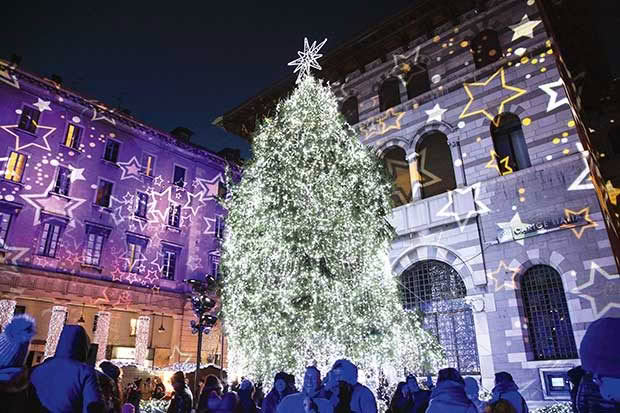
The main cathedral square in Lake Como township is transformed by magical light displays, complete with animated snowmen and reindeers.
Outside, in the labyrinth of stalls, some handmade, white-lace tree decorations caught my eye. These were heart-shaped and embroidered with an eldelweiss (a symbol of cheerfulness and happiness during festive times) – the perfect gift for each of my sisters. And one for me.
- It’s snowing outside, but my cabin is snug and warm. Snow boots and puffer jackets are the dress code for the week-long cruise.
- In Heidelberg, a culinary delight is adorned with strawberries, raspberries and macaroons. No dieting here.
- Every shape and size imaginable, these nutcracker dolls have more than 60 moving parts.
- Gigantic swans greet us as we disembark in Cologne.
- Who could resist this festive Santa jersey?
A week of winding through history later, as I farewell the cruise, I feel I’ve come a long way. As a professional photographer I’m used to hiding behind a lens so, at the outset, was slightly concerned about being confined to a riverboat and forced to socialize. I wondered if I’d made a mistake signing up for this style of holiday. Now as the waft of sweet, spiced breads tempt the senses, a warm Christmas on a sandy beach seems impossibly wrong.
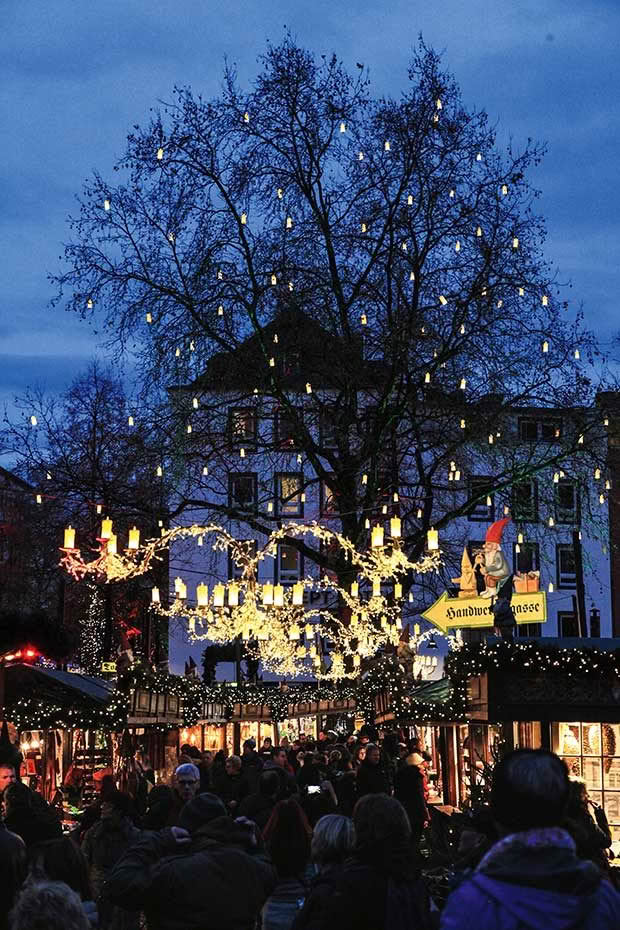
Shimmering lights combine with bustling crowds in Colmar’s medieval marketplace.
As I join my tour mates for the last opportunity to sample some Alsatian cuisine – frankfurters followed by warm apple strudel with vanilla custard – it’s not just the food that is appropriate and comforting. It’s the company too.
NOTEBOOK
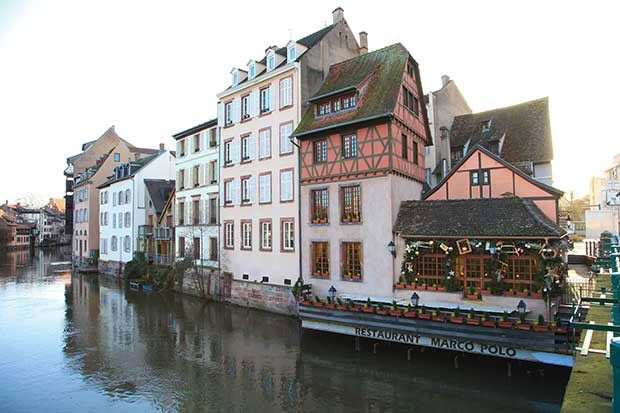
In Colmar, a maze of cobblestoned streets is lined with centuries-old half-timbered houses.
Fly: Most airlines offer an option to Amsterdam out of New Zealand. Emirates, for example, flies Auckland to Dubai and onto Amsterdam.
Onboard: Sally went on a seven-night Rhine cruise which departs from Amsterdam and takes in the cities of Cologne, Koblenz, Heidelberg, Strasbourg and a visit to the Black Forest. Guided sightseeing trips are available but it is also a good idea to research beforehand and embark on your own. Budget about $4000-plus per person for the week-long cruise.
Stay: When stopping over in Amsterdam, stay in the historic city. Doubletree By Hilton Centraal Station is 20 minutes from the airport by train, and within easy reach of the city’s famous shopping streets, restaurants and museums. Hit the rooftop terrace for the panorama; reception for the in-house bike rental service.
 This article first appeared in NZ Lifestyle Block Magazine.
This article first appeared in NZ Lifestyle Block Magazine.
